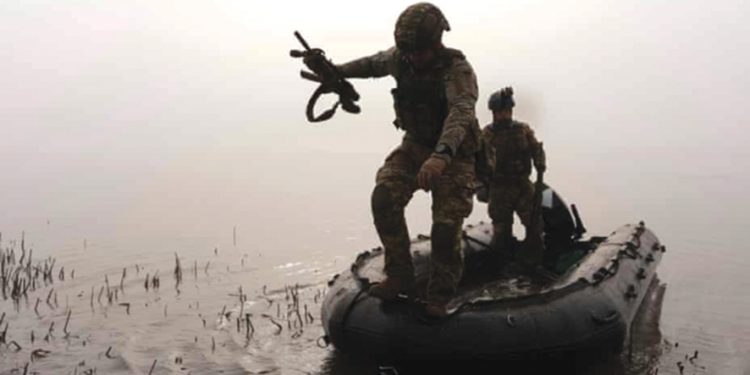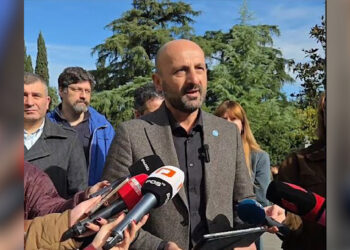While the world is distracted by the geopolitical turmoil in the Middle East, Ukraine continues to fight Russian forces across a swathe of the country, battling through deep Russian defenses along the south and east.
It is an understatement to say Ukraine’s counteroffensive, launched in June, has not been as successful as Kyiv and its Western allies hoped it would be — with Russian forces deeply dug in to defensive positions, progress has been tough for Ukraine and only a dozen or so towns and villages have been recaptured.
Russia still controls around a fifth of Ukraine, including most of the Luhansk and Donetsk regions in the east; the Crimean Peninsula and Zaporizhzhia in the south; and a chunk of the neighboring Kherson region.
“Ukraine’s counteroffensive has not achieved the presumed military and political objectives so far, and the prospects of a breakthrough appear limited,” Andrius Tursa, Central and Eastern Europe advisor at risk consultancy Teneo, said in a note Monday.
“Despite inflicting significant losses on Russian armed forces, Ukraine’s four-and-a-half-month-old counteroffensive has not achieved major territorial gains nor managed to slice through Russia’s ‘land bridge’ to Crimea,” he added.
Muddy season is near
Ukraine has a narrowing window of opportunity for making gains before the weather turns and the infamous muddy season, known as “rasputitsa” in Russian and “bezdorizhzhia” in Ukrainian, arrives.
“Limited progress to date tempers hopes of a breakthrough in the near term, especially as the autumn weather makes large-scale movement of heavy military equipment more challenging, and Russia is ramping up pressure in other parts of the frontline,” Tursa noted.
Muddy roads and fields wreaked havoc on ground conditions and offensive operations last fall and spring, and are likely to do so again. That would put an effective halt on offensive operations for weeks before the ground freezes over and vehicles and troops can move more easily again. It was hoped Ukraine would have made more progress by now, analysts noted.
“They’ll keep on fighting during the winter but what will happen is at the end of November the weather will turn pretty wet, and that will put a block on things until it turns cold, which will be sometime late December, early January,” they note.
Russia making bloody drive for linchpin town of Avdiivka
Russian forces have made a series of desperate and bloody lunges at the shattered town of Avdiivka, viewed as the gateway to recapturing Russian-held Donetsk and the rest of Donbas, made up of Donetsk and Luhansk regions.
Ukraine’s president, Volodymyr Zelensky, said the situation in Avdiivka and the nearby town of Maryinka remained “particularly tough. Numerous Russian attacks. But our positions are being held.”
In the meantime, the US-based Institute for the Study of War has reported that Ukrainian forces in Kherson have crossed from their side of the Dnipro river to take up new positions and pursue Russian forces. The Russians occupy the east bank at Kherson while the west bank remains free and under Ukrainian control, though regularly shelled by the Russians has continued over the weekend. Russia has said that Ukrainian crossing attempts took place.
‘Horrific’ Russian attack on postal depot kills six in eastern Ukraine
At least six people were killed and 16 others injured after a Russian missile strike on a postal terminal in the Kharkiv region of Ukraine, officials have said.
Russian forces fired two missiles from the Belgorod region, near the Ukrainian border, at “a building belonging to a logistics company located in the Kharkiv region” on Saturday, according to Dmytro Chubenko, the spokesperson for the Kharkiv region prosecutor’s office.
Chubenko added that search and rescue operations were ongoing and that the identities of the victims were still being established.
The six people killed in a Russian missile strike on a postal distribution center were all postal workers, aged between 19 and 42. Of the 17 injured, seven are in a serious condition, and said to be “fighting for their lives”.
The attack was condemned by the US ambassador to Ukraine, Bridget Blink, who wrote on X: “The Kremlin’s disregard for life is for all the world to see.”
The other key updates are the following:
• Russian forces shot down three missiles targeting the Crimean peninsula on Sunday, a Russian official said. The peninsula, which Moscow annexed from Ukraine in 2014, is crucial to Russia’s military offensive, both for supplying troops in southern Ukraine and for carrying out missile strikes from the sea, AFP reports.
• It is likely that Russia has suffered 150,000-190,000 permanent casualties (killed or permanently wounded) since the Ukraine war began, according to the latest update from the UK’s Ministry of Defense. If the numbers of temporary wounded (those recovered and due to return to the battlefield) are added, that number rises to 240,000-290,000, the MoD said on X.
• Russian troops attacked the village of Stanislav in Kherson region overnight on 22 October, damaging over 30 houses, though no casualties were reported.
• Ukraine fears a drone shortage due to China’s move to place restrictions on exports, the BBC reports. The war in Ukraine is the first armed conflict to see such extensive use of drones, which are used by both sides. Many of them are commercially made in China and bought off the shelf, and new supplies are vital because of the large numbers lost in the fighting.
• Russia’s Gazprom, looking to compensate for the loss of most of its European markets, will supply extra gas to Hungary and China. Hungary is the only member of the EU whose leader, prime minister Viktor Orbán, has maintained friendly ties to Putin and is seen as the key potential opponent to a decision due in December on whether to open EU accession talks with Ukraine, which would require the unanimous backing of the bloc’s 27 members.
Compiled by Ana Dumbadze














